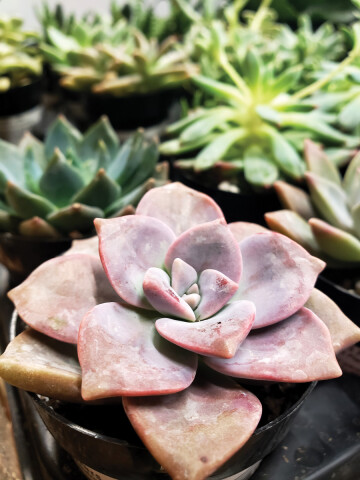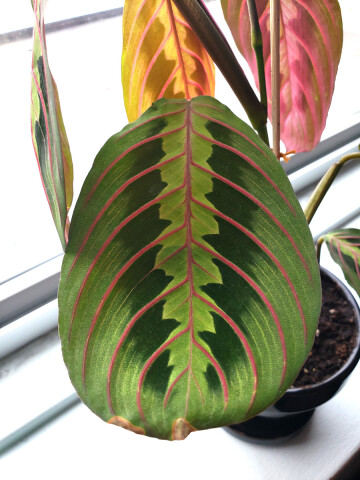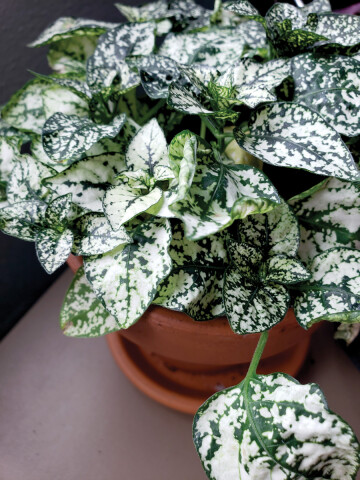Why Owning House Plants is Easy
Jamie Calloway | Wednesday Apr. 1st, 2020
You have probably heard “I do not have a green thumb” from a close friend or relative at some point in your life. Who knows, you may have said this yourself. Well, I am here to tell you that anyone can have a “green thumb” and the key is to find the perfect plant for yourself.
Common Problems Beginner Plant Owners Face
One of the most common mistakes that beginner plant owners face is self-confidence. Most people believe that they are either born with the skills to keep a plant alive or that they are going to kill every plant they touch, and that is not the case. I consider myself a plant enthusiast and I have even killed plants from time to time. The best advice that I can give someone is to find a plant that “fits your schedule” in regards to maintenance.“I recommend different plants for beginners, ones I’ve personally raised successfully in Bozeman. If you take a plant’s needs into account, you can decide what type of plant is best for you and your lifestyle.
There are a variety of common mistakes made when raising house plants. They include watering too much, providing too much light, and over-maintenance. Too much water is kind of a given but each plant requires different amounts. Watering from the bottom of your plant’s pot is a great way to avoid this and it also avoids draining nutrients from your plant. You can buy a plastic saucer from home improvement retail stores or local nurseries to achieve this method. Another option is to fill a bathtub or sink with a few centimeters of fresh water, which gives you the advantage of watering multiple plants at once. After soaking your plants for a few hours, dump the saucer or drain your bathtub/sink and allow the plants to completely drain. Another tip to avoid overwatering your plant is to buy terracotta pots. These pots pull water away from the plant and roots which can help you avoid this issue. When I wonder if my plant needs more water, a trick that I sometimes. I will stick a kabob skewer all the way down to the bottom of the soil. If there is no dirt sticking to the skewer when you pull it out, then it is okay to water it. If there are clumps, let it dry out more before watering it. If you attempt this method, I recommend pushing the skewer down the side of the pot instead of in the middle of the plant so you can avoid damaging some of the plant’s roots.
Too much light can also damage some plants and even burn them. To determine if this is causing a problem with your plants, look for bleached (where your leaves loose color) or dark spots in the general direction that the sun is hitting your plants. If this is the case for your plant, move it to a spot in your house that gets some shade throughout the day so that it can recover. Unfortunately, it is impossible to reverse these effects once the leaves have been damaged.
One of the last mistakes that people make is providing too much maintenance for your plants. This means that you may be moving the plant from one pot to another too early or you may be moving the plant way too much. Surprisingly, you can stress out a plant and its roots as a result of this movement. Sometimes you just have to let a plant be a plant.
Here are a few tips for buying a plant that fits your lifestyle. If you are not home as much as you would like to be, find a plant that does not require a lot of water. If you have a problem with overwatering plants, then get a plant that prefers moist soil. There is always going to be a plant that is flexible to some of the struggles with plants. One of my personal friends always struggled with root rot which would cause the entire plant to decay. I introduced her to a Butterwort (or pinguicula), which requires constant watering and a lot of sun. Ever since she bought this, she regained her love for plants.
I will now discuss plants that I personally recommend for beginner plant owners. I will rate them from 1 to 4, 1 being the easiest to take care of and 4 being the hardest. Do not worry, they are all pretty simple as long as you give them what they need.
Snake Plant (Sansevieria)
One of the plants that I highly recommend for new plant owners is the snake plant. The snake plant is popular for the plant owners who “cannot keep anything alive.” This plant thrives on dry soil and it can stay alive in low light. This is also a perfect plant for offices because of the minimal amount of care they need. When shopping for snake plants, look for plants that have dark leaves, because lighter leaves may indicate that the plant is already faltering. You also want to pick a soil that drains a lot. Personally I recommend getting cactus or succulent soil because it has adequate draining and avoids root rot. There are a variety of these plants and they come in different shapes and sizes. Most people often get tall thin ones, but I personally like the short, stumpy ones. No matter which one you get, it will require little maintenance.

Cacti and Succulents
Cacti and succulents are also great plants for beginners. Similar to snake plants, they thrive in dry soil and do not need much watering. Where they differentiate from each other is that cacti and succulents require a lot more light than snake plants. They are susceptible to stretching or rapid growth if they are not placed in direct light. This means that your plant will disform and it may not look the way you intended it too. Once, I bought a cactus that was perfectly round but I accidently left it in a shady corner and a little “arm” grew out of him. Long story short, he is definitely not round. One of the benefits of getting a succulent is that you can find a variety of echeveria, which are rose or flower-shaped. In my opinion, these echeverias are some of the most beautiful plants that you can get for your home and you can get them in a variety of greens and blues. Sometimes you can even find red or blue echeverias.

Pothos and Philodendron
If you want a plant that is unique and grows a decent amount throughout the year, then the pothos/philodendron is for you. The only difference between the pothos and philodendron plants are that philodendrons are often heart-shaped. This plant is a vining plant with green leaves that have yellow or white streaks, depending on which kind you get. The most common pothos that you find in Bozeman is a golden pothos which has green leaves and splashes of yellow coloring. Another beautiful variety is the marbled queen philodendron. This plant is variegated and has a beautiful white pattern all over the plant.
This is a plant that prefers moist soil over dry soil. When it wants more water, the leaves will start to droop and become a little soft. I own one of these currently and I water it roughly every two weeks, and more if Bozeman gets warmer days than usual. The golden pothos can easily grow between six and ten feet long and sometimes even longer than that. It is trendy to hang these plants from the ceiling and let them grow to the ground. Some people also take fishing line and tie multiple parts of the plant to the ceiling so that the vines travel across the room. This plant will definitely catch your guest’s attention and be a conversation piece.

Polka Dot Plant (Hypoestes Phyllostachya)
The polka dot plant is one of my all-time favorite plants, but I’m going to be honest, it is a little scary and probably the most dramatic plant that you will ever buy. When this plant needs water, all of the leaves will completely droop. It will honestly look like it is dying but roughly an hour after you give it some water, it will perk right back up and look like a completely different plant. The plant prefers moist soil so it will most likely droop once or twice a week depending on how much sun it is getting. These plants have beautiful and colorful “polka dot” patterns all over the leaves. The most common colors that you can get are white, pink, and a deep red colored plant. To keep these colorful patterns, you are going to want to mist the plant every day and make sure it gets plenty of indirect sun. This plant will definitely catch anyone’s attention with its bold colors.
If I was to give you one last piece of advice, I would recommend experimenting. At the end of the day no one is going to be an expert on plants and you just have to look for something that works for you. When you purchase plants from local nurseries, the employees will be more than willing to provide instructions on how to care for your plant. Along with this, there are local plant Facebook groups that are full of people who have knowledge about plants. They are usually willing to present some of their ideas, and who knows, you may even acquire a plant from one of these groups. confident and do your research on your new plant and there is no doubt that you will be successful.
| Tweet |
